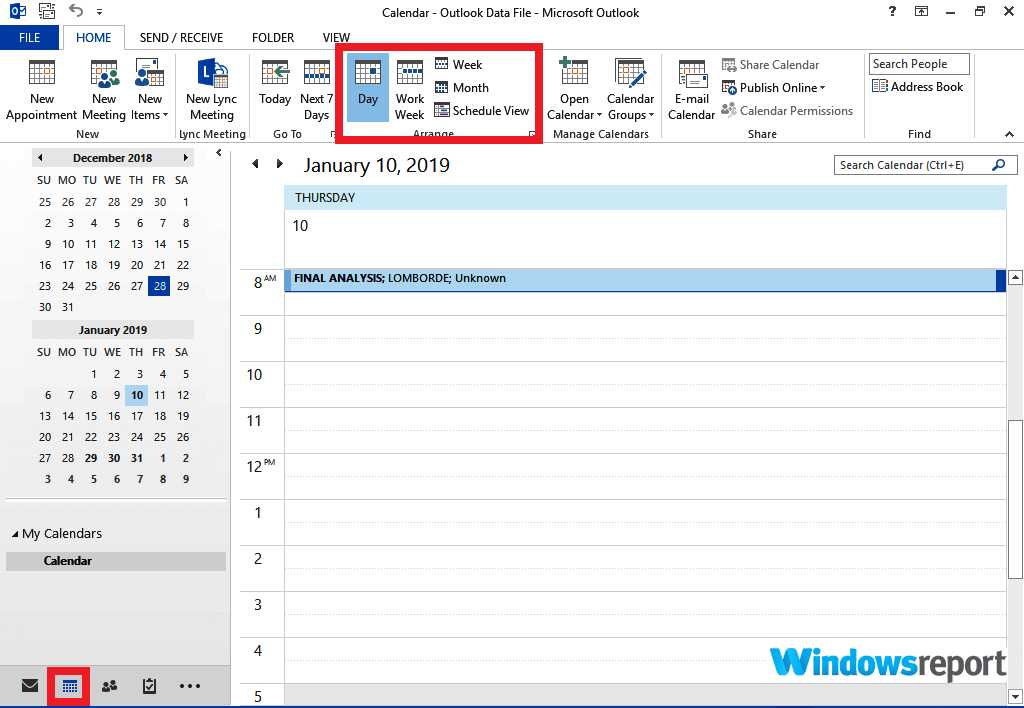

- TURN OFF REMINDERS FOR SHARED CALENDARS OUTLOOK 2016 MAC WINDOWS 10
- TURN OFF REMINDERS FOR SHARED CALENDARS OUTLOOK 2016 MAC WINDOWS 8
Open the Settings app (Windows key + I).

TURN OFF REMINDERS FOR SHARED CALENDARS OUTLOOK 2016 MAC WINDOWS 10
Windows 10: Hide notifications while presentingĪs Outlook 2013 and Outlook 2016 use the Windows 10 Action Center to display its alerts, disabling Outlook’s alerts during a presentation can be automated via a “Notifications & actions” setting in Windows 10. Windows 10 (including the Home Edition) also has an option to automatically hide alerts when presenting but this only works for Outlook 2013 and Outlook 2016 and not any previous Outlook version on Windows 10. However, by adding 2 values to the Registry, you can use it on your Desktop as well. Presentation Mode is only available on laptops and tablets and not on the Desktop.
TURN OFF REMINDERS FOR SHARED CALENDARS OUTLOOK 2016 MAC WINDOWS 8
When you are using the Professional, Ultimate or Enterprise edition of Windows Vista, Windows 7, Windows 8 or Windows 10, you can put your laptop into Presentation Mode which suppresses all notifications. When entering a meeting or giving a presentation, all these alerts are not so nice to have anymore.Īpart from closing Outlook, is there any way to turn these alerts off all at once? I also have some additional alerts set via rules. I hoped you could get round this by following the above steps but using the built in calendar as your selective alerting calendar (as it is always running and won't need to be opened to update), and using a replacement calendar app with all calendars shown but no alerts - sadly the normal Calendar app includes all calendars regardless of if you have turned a calendar off or not.Outlook has various alerts such as the New Mail Desktop Alert and of course the notification sound. Now your existing calendar app will still have access to all calendars but won't alert, the secondary app will do alerting only for the active ones.ĭownsides: You will need to periodically open and then shut the secondary calendar every so often in order for it to read the current alerts from the calendar data store and create it's own local notifications from them. None, and also go onto Sounds > alerts and set the calendar alert to Remove from Notification Centre, set alert style to Notifications app to show as you want them. Some (like Calvetica) are clever, and extend the alertsįunction by allowing a snooze option etc.Ĭalendar alerts and notifications via the normal settings> To only use the calendars you want alerts for (steps vary on choice The workflow would go something like this: I recommend Calvetiva, Agenda, or Tempus. You could use a 3rd party calendar app just for their notification functions as a bodgy workaround. Here are some calendar apps to examine: Calvetica, MiCal. You have to look potentially in two places for your calendar entries, but you will potentially get the granular control you need. You can then disable Notifications on one of the two apps. My last suggestion is to use a third-party app to manage one of your calendars and the built-in Calendar app to manage the other. This may be even a worse interface, however, as the OWA interface is not mobile-optimized. This isn't a good option, admittedly, as you will have to re-download your calendars every time it's slid back on.Īnother option is to keep calendars turned off for this account, and use Exchange Outlook Web Access to access your calendars. To do this, go to Settings > Mail, Contacts, Calendars > Your Work Mail Account. The best option, as mentioned in the comments above, is to disable the calendar on your work account, when not desired, and re-enable it again when you need it. I know this is not the answer you are hoping for. Alerts utilize Notification Center, and the Calendar options in Notification Center apply to all calendars.

You cannot silence the alerts of a single calendar in iOS.


 0 kommentar(er)
0 kommentar(er)
